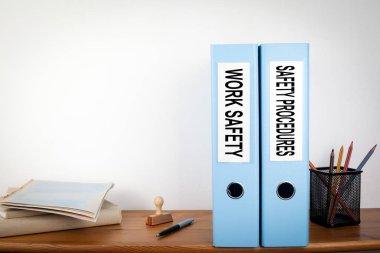Kia Ora! How do you ensure safety in your workplace? Every business owner wants a safe and healthy work environment for their employees. But in the daily hustle and bustle, it's easy for safety protocols to slip through the cracks. This is where health and safety audits come in – a crucial tool for identifying potential hazards and ensuring your workplace compliance with regulations.
What is a Health and Safety Audit?
Think of a health and safety audit as a thorough examination of your workplace's safety practices. A qualified auditor will come in, armed with a keen eye and a checklist of regulations, to assess your compliance and identify areas for improvement. This can include:
- Reviewing your health and safety policies and procedures: Are your policies clear, up-to-date, and readily accessible to all employees?
- Inspecting your work environment: Are there any potential physical hazards like trip hazards, faulty equipment, or inadequate ventilation?
- Observing work practices: Do employees follow safe work procedures? Are they properly trained and equipped for their tasks?
- Checking your accident and incident records: Are incidents being reported and investigated properly? Are there trends that need to be addressed?
Why Should You Conduct a Health and Safety Audit?
There are several compelling reasons to invest in a health and safety audit:
- Prevent Accidents and Injuries: By identifying potential hazards before they cause harm, you can create a safer work environment for your employees.
- Reduce Costs: Accidents and injuries can be expensive, leading to lost productivity, workers' compensation claims, and even legal trouble. Regular audits can help you avoid these costs.
- Improve Employee Morale: A safe and healthy work environment fosters a sense of well-being and increases employee morale.
- Demonstrate Compliance: Regular audits can help you demonstrate to regulatory bodies that you are taking workplace safety seriously.
Types of Health and Safety Audits
There are a few different types of health and safety audits to consider, each with its own focus:
- Compliance Audit: This audit verifies whether your workplace adheres to all relevant health and safety regulations.
- Gap Analysis Audit: This audit identifies areas where your current practices fall short of best practices or regulatory requirements.
- Management System Audit: This audit evaluates the effectiveness of your overall health and safety management system.
Finding the Right Health and Safety Auditor
Choosing the right auditor is crucial for a successful audit. Here are some key factors to consider:
- Experience: Look for an auditor with experience in your specific industry and knowledge of relevant regulations.
- Qualifications: Ensure the auditor holds the appropriate qualifications and certifications.
- Independence: Choose an auditor who is independent from your company to ensure an objective assessment.
Beyond the Audit: Taking Action
A health and safety compliance audit is just the first step. Once you receive the audit report, it's crucial to take action on the recommendations. This might involve:
- Developing and implementing a corrective action plan: Address the identified hazards and implement changes to improve safety practices.
- Providing additional training for employees: Ensure your employees have the knowledge and skills necessary to work safely.
- Regularly reviewing and updating your health and safety policies and procedures: Stay current with regulations and adapt your procedures as needed.
Investing in a health and safety audit is an investment in the well-being of your employees and the success of your business. By creating a safe and healthy work environment, you can reduce costs, improve morale, and ensure a positive future for your company.

